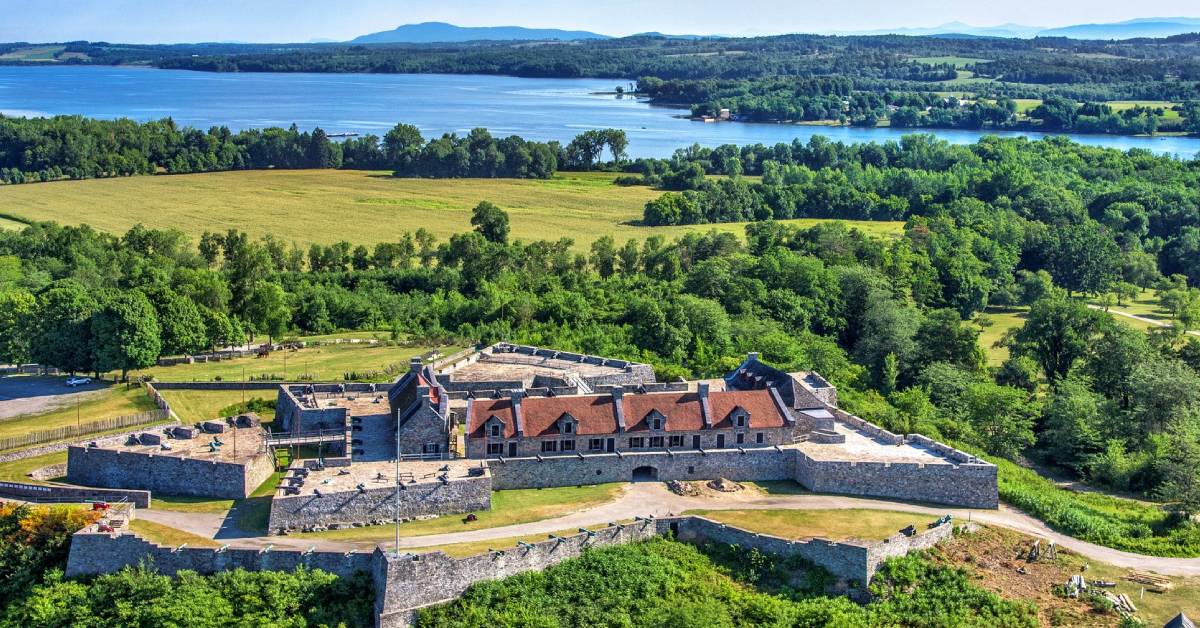Check Out the Top Lake George News, Business Updates, and More
Are you wondering what's new in Lake George NY and the surrounding region? From new business openings to major events, announcements, and more, our team has you covered. Check out some of the latest Lake George news updates below!
Shepard Park Getting a Face Lift, New Amphitheater
We all remember when the amphitheater at Shepard Park, used for the various summer concert series, burned down last summer. A temporary stage was erected for 2024. Now, The Lake George Mirror is reporting that Shepard Park will receive funds for a new amphitheater - and more.

The publication reports that Shepard Park will receive "a lion's share" of $10 of revitalization funds promised to Lake George in 2023 by New York State. The project will encompass a new audio/visual structure and a restored and expanded stone amphitheater, as well as a new playground, pathways, lighting, and links to utilities.
The stage is expected to be about 20% larger than its predecessor, but otherwise the plans for rebuilding are mostly keeping the same structure of what was there before.
No timeline has been revealed, although a Sun Community News article from February indicated that construction could start this fall.
Whether or not the new amphitheater will be ready for this season, the free concerts throughout the summer - Tribute Tuesdays, Lake George Art Project's Concert Series Wednesdays, Fridays by the Lake, and more - are on.
Last year's temporary structure worked well, and attendees loved the open-air feel that allowed you to take in the lake as much as the music.
Sources:
- The Lake George Mirror: The Rebirth of Shepard Park
- The Sun Community News: Shepard Park amphitheater plans well-received
4th of July Roundup: Fireworks & Festivities
Wondering what's happening for the 4th of July? Find fireworks, parades and more in the Lake George area, and points north and south! Make sure to pay attention to the dates - some are the 3rd, 4th, or 5th, and a few celebrations span more than one day.

4th Fun In & Near Lake George
4th of July at Fort William Henry
This all encompassing event includes live music, crafts, games like cornhole, wood-burning fire pits, musket and cannon demonstrations, and more at Fort William Henry. Food is included with your ticket, plus a front-ow seat for fireworks.
You can't get closer to the fireworks over the lake than when you're actually on the lake, via a cruise with the Lake George Steamboat Company!
4th of July Fireworks Over Lake George
The Village of Lake George will put on their annual fireworks at 9:30pm. Watch from Shepard Park or Beach Road - just make sure you come early to grab parking!
Glens Falls Symphony Summer Pops & Fireworks
You don't have to wait for July 4th for fireworks and fun - the annual Glens Falls Symphony Summer Pops concert followed by fireworks happens on July 3.
Head off the beaten path to Corinth on Saturday, about 25 minutes from Lake George, for fireworks the day after the 4th.
4th Fun Within 1 Hour of Lake George
The official summer meet at the track in Saratoga starts on July 10, about 30 minutes from Lake George, but before that, there's the July 4th Racing Festival from July 3 to 6.
Keep the fun going to Saturday, July 5th at the Silver Bay YMCA, about 35 to 40 minutes north of Lake George. This is a great place to spend the holiday weekend, with their many on-site activities - and of course, fireworks.
Head up to Hague, about 45 minutes north, for food, drinks, music, and a fireworks show the day before Independence Day.
About 45 minutes from Lake George at Clifton Common, enjoy a parade, good food, live music, and fireworks.
Head one hour north to Bicentennial Park in Ticonderoga for the Best 4th in the North celebration from July 1 to 4. Think food trucks, fun for kids, carnival rides, and a parade - plus fireworks!
4th of July at Fort Ticonderoga
For a unique experience on the grounds of where the Revolution was fought, make a visit to Fort Ticonderoga for demonstrations, historic gardens, and more fun in a beautiful setting.
Head one hour south to the Empire State Plaza in Albany for the New York State 4th of July Celebration Presented by Market 32. Enjoy several live bands ahead of the fireworks.
New Lake George Journey Blends Art, Education & Adventure for All Ages

Local authors Tamara Jacobi and Walter Wright are launching Lake George Journey, a fun and educational tribute to the Queen of American Lakes. The book was introduced at The Lake George Association Lake Protector Summit and is available in stores starting Memorial Day Weekend.
Lake George Journey uses the alphabet as a guide to explore the lake's ecology, history, and spirit, with each letter featuring a short story and vibrant I-spy artwork from seven local artists - plus fun facts and educational insights!
"Don't let the fact that this book is colorful and 'kid-friendly' fool you," Roger R. Summerhayes, LGA Floating Classroom Educator, said in a statement. "It is filled with valuable scientific information and important history that will be just as as informative and interesting to adults."
Thank you to the following organizations for their contributions and support: the LGLC, LGA, Waterkeeper Alliance, Darrin Freshwater Institute, the Arts Project, and the LARAC.
Keep this book in mind next time you need to give a gift to a Lake George lover!
250 Years Later: Fort Ticonderoga Revisits the American Revolution

Commemorations, reenactments, and special events are taking place across the country this year into next in honor of the 250th anniversary of the American Revolution. Having played a pivotal role in the early stages of the revolution, Fort Ticonderoga is front and center with a multi-year plan in place to honor this special time.
Although the official anniversary of the American Revolution is considered to be 2025 to 2026, Fort Ticonderoga is extending the commemorations into 2027.
As the site of America’s first victory in 1775, Fort Ticonderoga will explore the war’s key early years through immersive programming, dramatic reenactments, new exhibitions, and expansive educational initiatives.
Central to this effort is the Real Time Revolution, a day-by-day reenactment of events from 1775 to 1777, offering a vivid experience of the people and decisions that shaped America’s path to independence.

Key highlights of the 2025 programming include:
- May 3 - Exhibition Opening: “Subjects, Citizens, Service,” part of the new Revolutionary Anthology series, debuts with rare artifacts.
- May 9 - 11 -NO QUARTER: Real-time reenactment of the Green Mountain Boys’ march and the capture of Fort Ticonderoga.
- June 21 & 22 - Benedict Arnold’s Command: Discover the leadership and controversy surrounding one of the Revolution’s most complex figures.
- August 30 & 31 - Onward to Canada: Learn about Ticonderoga’s strategic role as a base and supply point.
- December 6 - Noble Train Begins: Follow the start of Henry Knox’s epic transport of artillery to Boston.
Additional things to look forward to with regards to the anniversary:
- A new interactive website, NorthernDepartment.org, which details the 18 sites and partnering museums that formed this historic region
- Expanded educational programs on site and online for educators and students
Make sure to check them out on their opening weekend - May 3 & 4!
Find out about things to do in Lake George >>